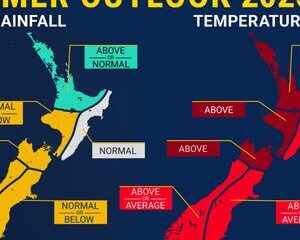Health
Surgery Access Disparities Persist Three Years After Reforms

Despite the promise of nationalised health services in New Zealand to eliminate the postcode lottery that determines access to surgical care, significant disparities remain. Recent data reveals that treatment thresholds for non-urgent surgeries continue to vary dramatically across the country, affecting patients’ ability to receive timely care.
Michaela Wyatt, a 31-year-old mother from Hastings, has faced debilitating pain from endometriosis since adolescence. After enduring multiple medical interventions and nine miscarriages, she hopes for a hysterectomy to alleviate her suffering. Almost three years after her referral in November 2022, Wyatt remains in limbo, awaiting surgery. In a letter from Health NZ dated June 2024, the organisation acknowledged it had failed to meet the initial assessment target of four months due to overwhelming demand on the health system.
“What are we waiting for?” Wyatt questioned. “These are serious issues that affect so many people in so many ways.” Her frustration is compounded by the knowledge that her region, Hawke’s Bay, has one of the highest qualifying scores for gynaecology surgery at 60, while patients in other regions, such as the West Coast, may qualify for surgery with a score as low as 10.
The reforms initiated in 2022 aimed to unify care across the nation, promising equal access to healthcare for all New Zealanders. However, disparities in treatment thresholds persist, particularly in the area of gynaecology. Dr. Helen Paterson, a senior lecturer in gynaecology at Otago University, highlights that the Southern region now has the highest threshold at 75, up from 65 in 2022.
“I am just getting more and more of that—where people are just desperate,” Paterson stated, expressing disappointment that the hoped-for improvements have not materialised.
Understanding Treatment Thresholds
The Clinical Prioritisation Assessment Criteria (CPAC), established in the 1990s, aims to prioritise patients based on the severity of their conditions and the potential benefit of surgery. Each patient’s score, ranging from 0 to 100, determines eligibility for surgery within a four-month period. However, as noted by Ros Pochin, chair of the College of Surgeons NZ, these thresholds have historically varied significantly across different districts, leading to inequities in access.
In Nelson, for example, patients may struggle to receive necessary procedures like umbilical hernia repairs, while those in Auckland can access the same surgery with fewer barriers. Pochin remarked, “That’s not reasonable, or equitable,” emphasising the ongoing challenges in achieving uniform care across the country.
Former auditor-general John Ryan echoed these concerns in a June report, calling on Health NZ to commit to a clear timeline for establishing consistent treatment thresholds.
Personal Stories Highlight the Impact
Stacey Hill, a 40-year-old mother from Christchurch, faced a life-threatening situation due to obesity. After reaching a weight of 145 kg following the birth of her son, she was warned by her doctor that without intervention, she risked developing diabetes and potentially shortening her lifespan. Hill sought a referral for bariatric surgery in February 2024 but faced delays in the public system.
Desperate for change, she withdrew approximately $20,000 from her retirement savings to undergo private surgery, resulting in a significant weight loss to 78 kg. “It’s not about making the effort now, it’s because I love doing it,” Hill reflected, though she acknowledged that not everyone can afford such a choice.
The disparity in treatment thresholds for bariatric surgery highlights the ongoing challenges in the healthcare system, with Canterbury requiring a score of 68 to qualify for surgery while Auckland has a threshold of just 10.
Recent data obtained under the Official Information Act revealed that general gynaecology, ear, nose and throat, plastics, and orthopaedic surgery all showcase ranges of over 60 points between the lowest and highest qualifying scores. Such discrepancies mean that individuals with identical symptoms may experience vastly different journeys to care.
As Tanya Cooke, chief executive of Endometriosis New Zealand, pointed out, “The postcode lottery for endometriosis care means two people with the same symptoms can face vastly different journeys.”
Efforts to standardise treatment thresholds have begun, but challenges remain. Dr. Paterson suggested that increasing funding for areas with higher qualifying scores could help, along with allowing patients to seek treatment in regions with greater capacity.
Health NZ’s director of national clinical networks, Mary Cleary-Lyons, acknowledged the ongoing variations in CPAC scores for elective surgery. She attributed these discrepancies to differing practices among district health boards and stressed that Health NZ is committed to addressing these disparities over time.
As the healthcare landscape continues to evolve, the stories of patients like Wyatt, Hill, and others highlight the urgent need for a more equitable system that ensures timely access to necessary surgical procedures, regardless of geographic location.
-

 World1 week ago
World1 week agoPrivate Funeral Held for Dean Field and His Three Children
-

 Top Stories2 weeks ago
Top Stories2 weeks agoFuneral Planned for Field Siblings After Tragic House Fire
-

 Sports3 months ago
Sports3 months agoNetball New Zealand Stands Down Dame Noeline Taurua for Series
-

 Entertainment3 months ago
Entertainment3 months agoTributes Pour In for Lachlan Rofe, Reality Star, Dead at 47
-

 Entertainment2 months ago
Entertainment2 months agoNew ‘Maverick’ Chaser Joins Beat the Chasers Season Finale
-

 Sports3 months ago
Sports3 months agoSilver Ferns Legend Laura Langman Criticizes Team’s Attitude
-

 Sports4 weeks ago
Sports4 weeks agoEli Katoa Rushed to Hospital After Sideline Incident During Match
-

 World2 weeks ago
World2 weeks agoInvestigation Underway in Tragic Sanson House Fire Involving Family
-

 Politics2 months ago
Politics2 months agoNetball NZ Calls for Respect Amid Dame Taurua’s Standoff
-

 Top Stories2 weeks ago
Top Stories2 weeks agoShock and Grief Follow Tragic Family Deaths in New Zealand
-

 Entertainment3 months ago
Entertainment3 months agoKhloe Kardashian Embraces Innovative Stem Cell Therapy in Mexico
-

 World4 months ago
World4 months agoPolice Arrest Multiple Individuals During Funeral for Zain Taikato-Fox




















